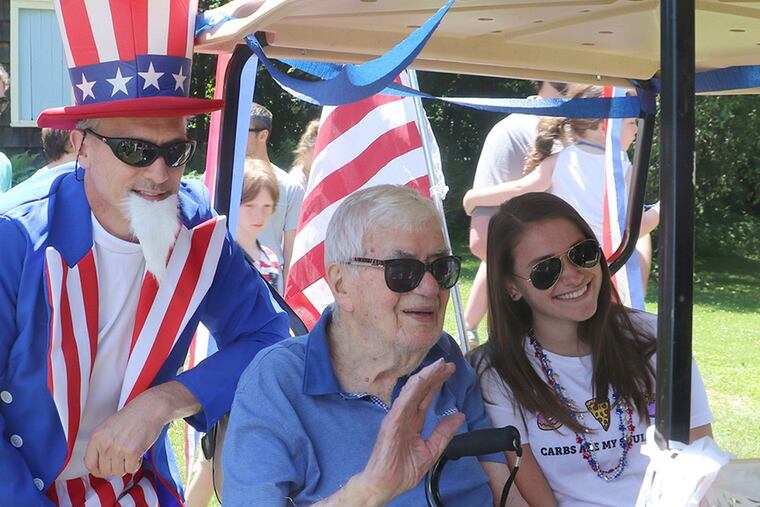Pennsylvania’s Monroe County could play an important role in the presidential outcome | Opinion
This year, Monroe’s changing economic, cultural, and political dynamics could make the county an important bellwether.

Located two hours west of Manhattan, in the Pocono Mountains, Pennsylvania’s Monroe County offers New Yorkers a bucolic escape, while also retaining elements of New York’s economic and cultural influence. In the county’s wooded, but developing, outskirts, older residents recall a more rustic past. Meantime, in populous gated communities, uprooted New Yorkers find echoes of their previous existence, from bad commutes to crowded schools.
Over the past decade, this rural-urban contrast has changed Monroe’s political composition. Once a Republican stronghold, the county now has a sizable Democratic voter advantage. In 2016, however, Donald Trump lost Monroe by only 532 votes—a hint of his strength in Pennsylvania, which he won. Today, Monroe’s politics are more complex than ever, and this November, the county’s rural turnout may determine Trump’s electoral fortunes in the Keystone State. Christopher Borick, director of the Muhlenberg College Institute of Public Opinion, believes that Monroe could emerge as an indicator of how Pennsylvania votes. “Its growing diversity, mixed with a large rural population, captures some key characteristics of the state as a whole,” said Borick, who began his career in Monroe as a county planner. “I think the results there in 2020 may very well closely mirror the state results.”
New Yorkers’ ties to Monroe date back to the nineteenth century, when residents began opening summer boardinghouses and inns that attracted visitors from New York and New Jersey. The region’s recreational amenities drew thousands of city dwellers; some never left. In the late 1800s, Richard Slee, a Brooklyn bacteriologist, arrived at a local inn to recuperate from cholera. He ultimately married the innkeeper’s daughter and started Pocono Biological Laboratories—the first American pharmaceutical company to produce France’s improved smallpox vaccine. Other New Yorkers followed Slee’s early lead, making Monroe home. New Yorkers’ affection for the Poconos grew when resort hotels and ski lodges made Monroe a honeymoon destination. The postwar newlyweds who stayed helped fuel the county’s population explosion.
In the early 1970s, with a population of only 45,000, Monroe remained a conservative, rural county, where families from suburban Philadelphia and New Jersey kept weekend lakeside cabins. But the steady influx of new residents, especially from New York—and especially after 9/11—made Monroe one of Pennsylvania’s fastest-growing and most diverse counties. Today, its nearly 170,000 residents work in the region’s burgeoning tourism industry, for the federal government, or for local schools and hospitals. They’re concentrated in Monroe’s east end, from subdivisions and private neighborhoods to Stroudsburg—the Rockwellian county seat—and East Stroudsburg, a state-university town.
Monroe’s newer residents represent a break with the county’s political past. In the early 2000s, Democrats began outnumbering Republicans; today, they make up a voting majority in 14 of Monroe’s 20 municipalities. Between 1960 and 2004, Monroe favored the Republican candidate in every presidential election, except 1964. That winning streak ended with Barack Obama, who carried the county by significant margins in 2008. Democrats have since enjoyed down-ballot victories, too, but massive rural support for Trump could flip Monroe back into the GOP column this year.
Josephine Ferro, Monroe County’s Registrar of Wills, finds support for Trump’s reelection strong, especially in the county’s more rural west end. “Everybody seems to be excited everywhere you go,” said Ferro, a former county GOP chairwoman, who also observed voters circulating petitions for Trump’s nomination earlier this month. She believes that “there’s more passion than 2016.” Borick thinks that Trump could win Monroe County this time around. “It was very close in 2016,” he says, “and while trending Democratic in recent years, the fairly rural make-up of much of the county presents an opportunity for Trump.”
Monroe’s economic dynamics could prove crucial. The county has fared better than many of Pennsylvania’s rural regions. It’s the epicenter of Poconos tourism, a multibillion-dollar industry that attracts nearly 30 million visitors annually to its ski resorts, nature preserves, and the nation’s largest indoor water park. And Tobyhanna Army Depot, the Defense Department’s largest electronics-maintenance facility, is northeastern Pennsylvania’s top employer. The lab that Slee started in 1897 is now Sanofi Pasteur, a global pharmaceuticals company working with the Department of Homeland Security to develop a coronavirus vaccine.
But Monroe also confronts the challenges of an urban-rural divide. Homeowners are frustrated by high property taxes. Decades of population growth have strained local infrastructure. Traffic on Interstate 80—the county’s main highway—often rivals gridlock anywhere else but New York. Thousands of Monroe County commuters pack buses daily into New York City—rated the nation’s worst commute—a reminder that many residents must find private-sector jobs elsewhere. And the county, due in part to its topography, hasn’t enjoyed the logistics and manufacturing boom occurring immediately south, in the Lehigh Valley.
This year, Monroe’s changing economic, cultural, and political dynamics could make the county an important bellwether. Every vote will count in a state that Trump won by only 44,000 votes in 2016. This November, his statewide performance could heavily depend on Monroe, where rural voters must outnumber New York-bred Democrats in competitive precincts to put him over the top. “The signs are out, the people have their flags out,” said Ferro. “I’d say this is Trump territory.”
Charles F. McElwee is assistant editor of City Journal, where this piece originally appeared.